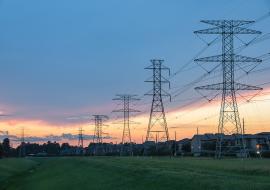Energy Efficiency Resource Standards
An energy efficiency resource standard (EERS) establishes specific, long-term targets for energy savings that utilities or non-utility program administrators must meet through customer energy efficiency programs. An EERS can apply to electric or natural gas utilities, or both, depending on the state, and can be adopted through legislation or regulation. An EERS is similar in concept to a renewable energy standard (RES), renewable portfolio standard, or clean electricity standard. While an RES requires that electric utilities generate a certain percentage of their electricity from renewable sources, an EERS requires that they achieve a certain amount of energy savings from energy efficiency measures. More than 25 states have EERS policies in place. The strongest EERS requirements are in Massachusetts and Rhode Island, which require more than 2.5% new savings annually. For a complete summary of state-level EERS policies and impacts, see the State EERS Policy Brief.
Energy efficiency resource standards (EERS) have been a key tool for delivering energy savings, and now many states are looking to their energy efficiency policies to do more, including meeting aggressive climate goals, lowering system costs, improving grid flexibility, and providing bill savings and healthier homes to those with the highest need. They are increasingly adopting “next-generation” EERS that adopt multiple complementary policy objectives or capture multiple types of benefits in the goal-setting process.
A federal EERS would complement existing state-level energy efficiency standards by setting a national goal for energy savings with targets for utilities in every state. A modest EERS passed the House in 2009, and there have been a number of proposals for EERS introduced in the Senate and House since then. At both the federal and state levels, an energy efficiency resource standard is a critical policy that lays the foundation for sustained investment in energy efficiency. The long-term goals associated with an EERS send a clear signal to market actors about the importance of energy efficiency in utility program planning, creating a level of certainty that encourages large-scale investment in cost-effective energy efficiency.
Highlighted Resources
Contact Info
For more information or to contact a researcher, please visit the utilities program.







